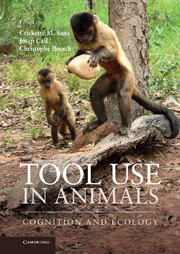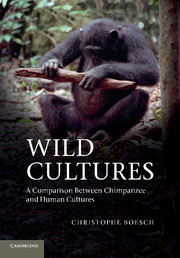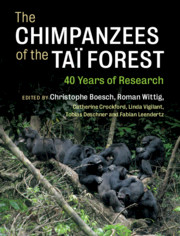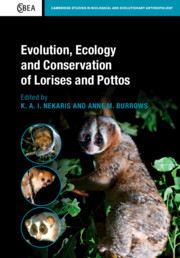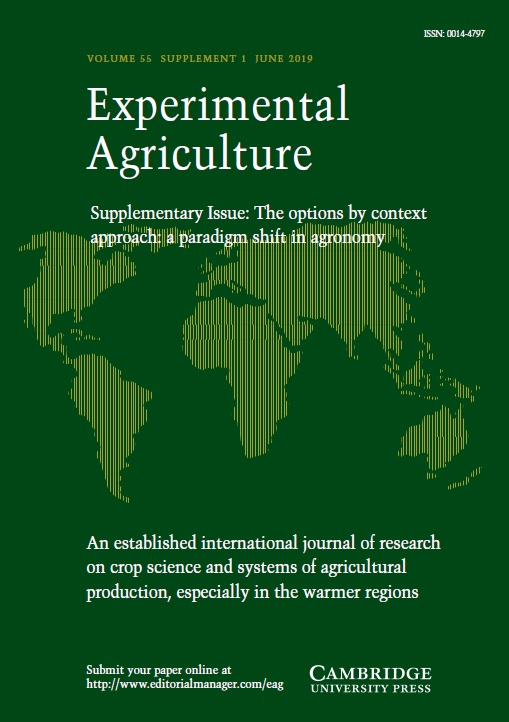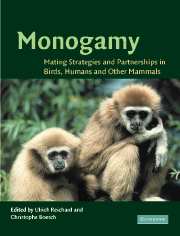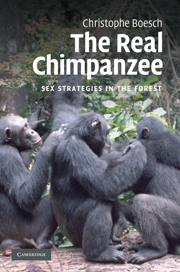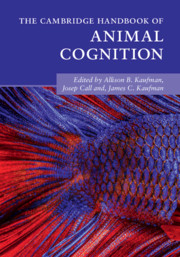Tool Use in Animals
Cognition and Ecology
$92.99 (C)
- Editors:
- Crickette M. Sanz, Washington University, St Louis
- Josep Call, Max-Planck-Institut für Evolutionäre Anthropologie, Germany
- Christophe Boesch, Max-Planck-Institut für Evolutionäre Anthropologie, Germany
- Date Published: April 2013
- availability: Available
- format: Hardback
- isbn: 9781107011199
$
92.99
(C)
Hardback
Other available formats:
Paperback, eBook
Looking for an examination copy?
This title is not currently available for examination. However, if you are interested in the title for your course we can consider offering an examination copy. To register your interest please contact [email protected] providing details of the course you are teaching.
-
The last decade has witnessed remarkable discoveries and advances in our understanding of the tool using behaviour of animals. Wild populations of capuchin monkeys have been observed to crack open nuts with stone tools, similar to the skills of chimpanzees and humans. Corvids have been observed to use and make tools that rival in complexity the behaviours exhibited by the great apes. Excavations of the nut cracking sites of chimpanzees have been dated to around 4-5 thousand years ago. Tool Use in Animals collates these and many more contributions by leading scholars in psychology, biology and anthropology, along with supplementary online materials, into a comprehensive assessment of the cognitive abilities and environmental forces shaping these behaviours in taxa as distantly related as primates and corvids.
Read more- Relates specific scientific research to broader evolutionary questions and pursuits
- Accompanied by electronic supplementary materials which allow readers to witness the actual behaviours described in the text
- Looks at tool use in a wide variety of animals from a cognitive and environmental perspective
Reviews & endorsements
"Tool Use in Animals: Cognition and Ecology may well be the new benchmark text for animal cognition. This book is clear, well-written, suitably broad in its approach, and delivers information that covers a review of the field in addition to new data. Its appeal will encompass readers from various connected academic disciplines, and [it] is an appropriate text for professionals and for students. This is an important and timely offering, and a happy addition to my library."
Kerrie Lewis Graham, American Journal of Physical AnthropologySee more reviews"During the half century since Jane Goodall first observed a chimpanzee fashioning and using a tool, there has been great interest and attention to defining, describing, and interpreting tool use among many animal phyla. Whereas some books have catalogued tool use, this volume investigates four behavioral domains - phylogenetic, functional, ontogenetic, and mechanistic … Readers will gain perspective on the interaction of evolutionary and environmental factors shaping tool use behaviour, yet wonder why more animals do not use tools or make better use of them … Highly recommended. Lower-division undergraduates and above; general readers."
J. Burger, ChoiceCustomer reviews
Not yet reviewed
Be the first to review
Review was not posted due to profanity
×Product details
- Date Published: April 2013
- format: Hardback
- isbn: 9781107011199
- length: 324 pages
- dimensions: 249 x 180 x 20 mm
- weight: 0.79kg
- contains: 52 b/w illus. 7 tables
- availability: Available
Table of Contents
List of contributors
Part I. Cognition of Tool Use:
1. Three ingredients for becoming a creative tool-user J. Call
2. Ecology and cognition of tool use in chimpanzees C. Boesch
3. Chimpanzees plan their tool use R. W. Byrne, C. M. Sanz and D. B. Morgan
Part II. Comparative Cognition:
4. Insight, imagination and invention: tool understanding in a non-tool-using corvid N. Emery
5. Why is tool use rare in animals? G. Hunt, R. Gray and A. Taylor
6. Understanding differences in the way human and non-human primates represent tools: the role of teleological-intentional information A. M. Ruiz and L. R. Santos
7. Why do woodpecker finches use tools? S. Tebbich and I. Teschke
Part III. Ecology and Culture:
8. The social context of chimpanzee tool use C. M. Sanz and D. B. Morgan
9. Orangutan tool use and the evolution of technology E. J. M. Meulman and C. P. van Schaik
10. The EthoCebus project: stone tool use by wild capuchin monkeys E. Visalberghi and D. Fragaszy
Part IV. Archaeological Perspectives:
11. From pounding to knapping: how chimpanzees can help us model hominin lithics S. Carvalho, T. Matsuzawa and W. C. McGrew
12. Early hominin social learning strategies underlying the use and production of bone and stone tools M. Caruana, F. d'Errico and L. Backwell
13. Perspectives on stone tools and cognition in the early paleolithic record S. P. McPherron
Index.-
Find resources associated with this title
Type Name Unlocked * Format Size Showing of
This title is supported by one or more locked resources. Access to locked resources is granted exclusively by Cambridge University Press to instructors whose faculty status has been verified. To gain access to locked resources, instructors should sign in to or register for a Cambridge user account.
Please use locked resources responsibly and exercise your professional discretion when choosing how you share these materials with your students. Other instructors may wish to use locked resources for assessment purposes and their usefulness is undermined when the source files (for example, solution manuals or test banks) are shared online or via social networks.
Supplementary resources are subject to copyright. Instructors are permitted to view, print or download these resources for use in their teaching, but may not change them or use them for commercial gain.
If you are having problems accessing these resources please contact [email protected].
Sorry, this resource is locked
Please register or sign in to request access. If you are having problems accessing these resources please email [email protected]
Register Sign in» Proceed
You are now leaving the Cambridge University Press website. Your eBook purchase and download will be completed by our partner www.ebooks.com. Please see the permission section of the www.ebooks.com catalogue page for details of the print & copy limits on our eBooks.
Continue ×Are you sure you want to delete your account?
This cannot be undone.
Thank you for your feedback which will help us improve our service.
If you requested a response, we will make sure to get back to you shortly.
×
